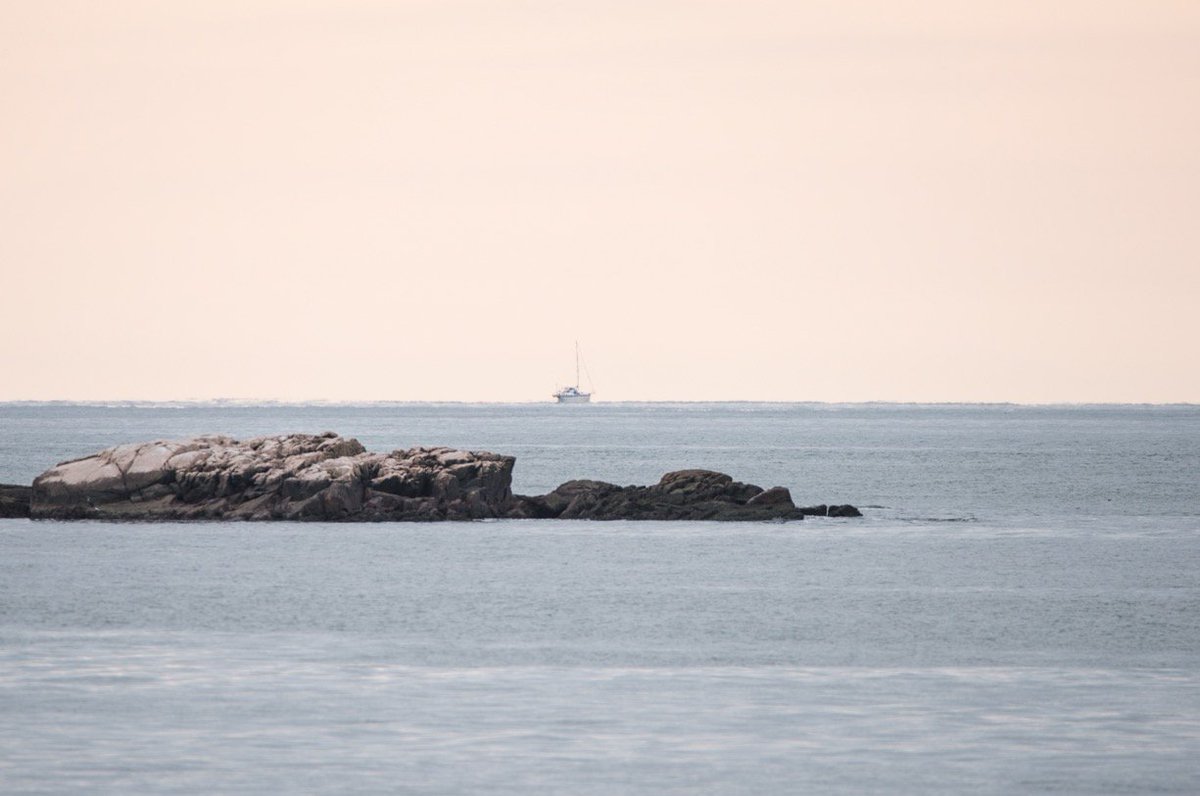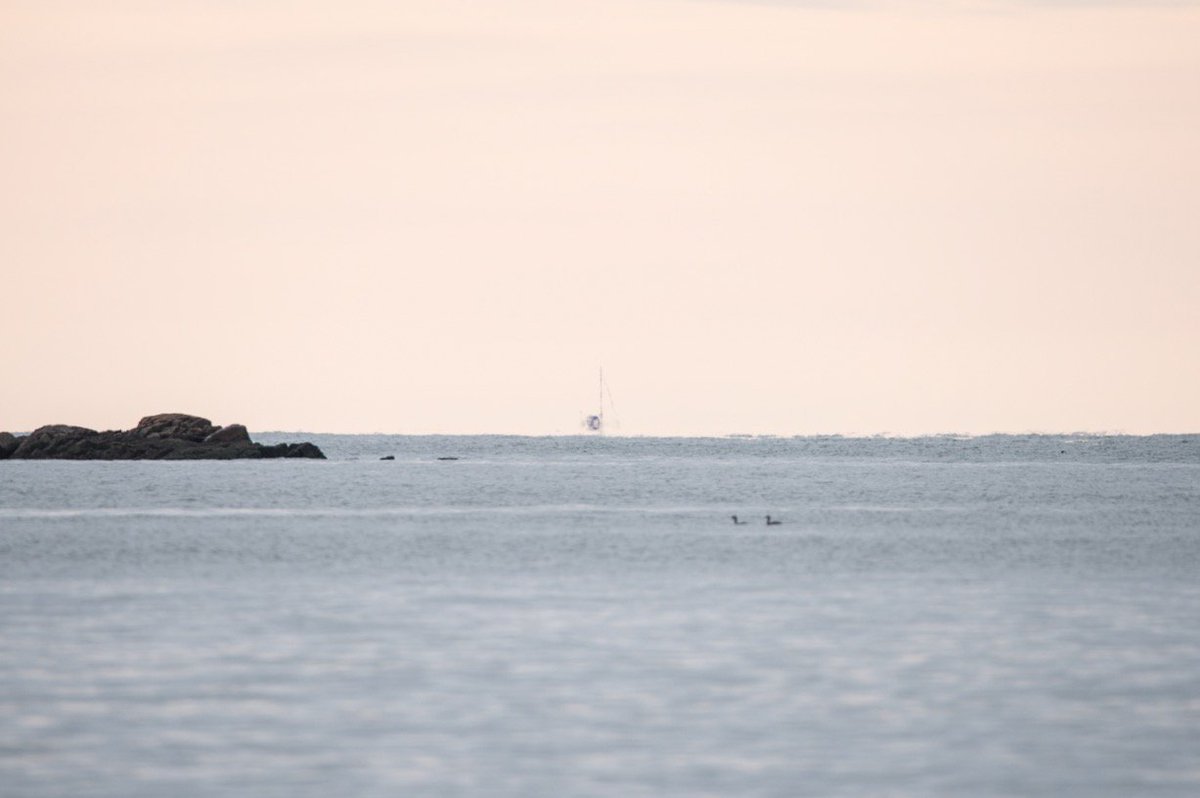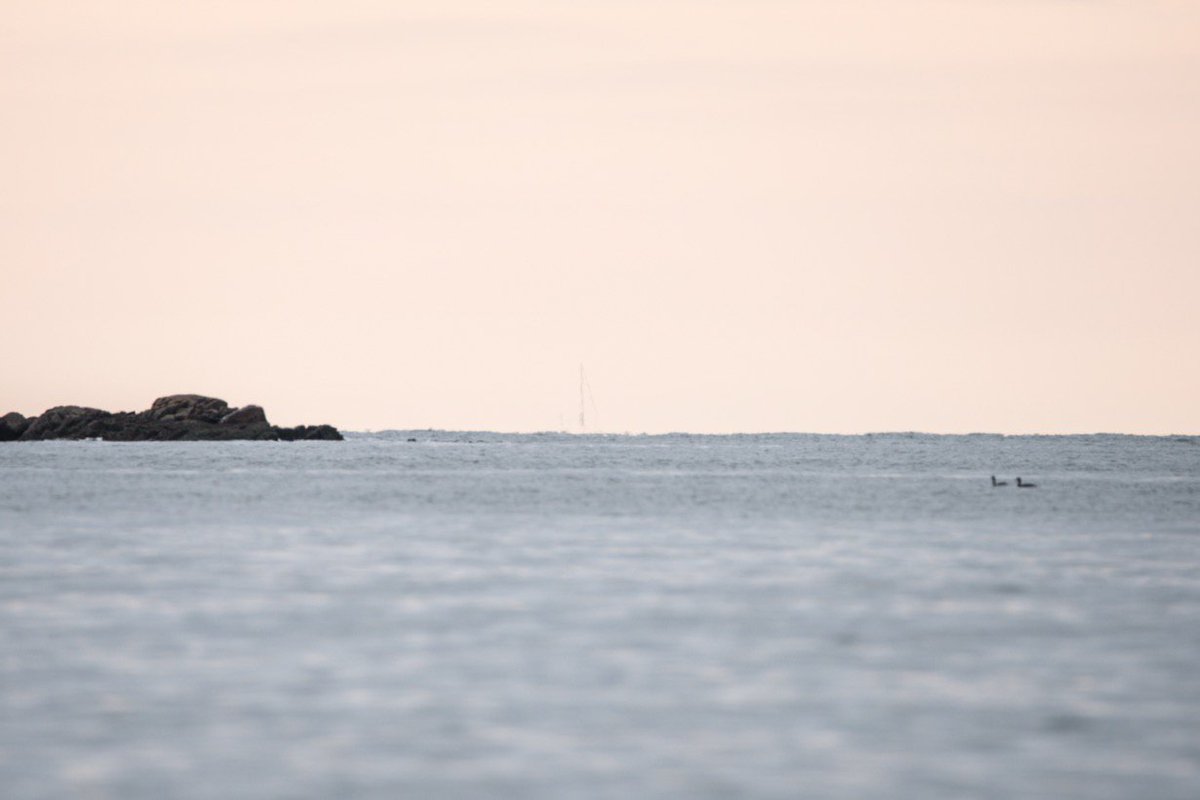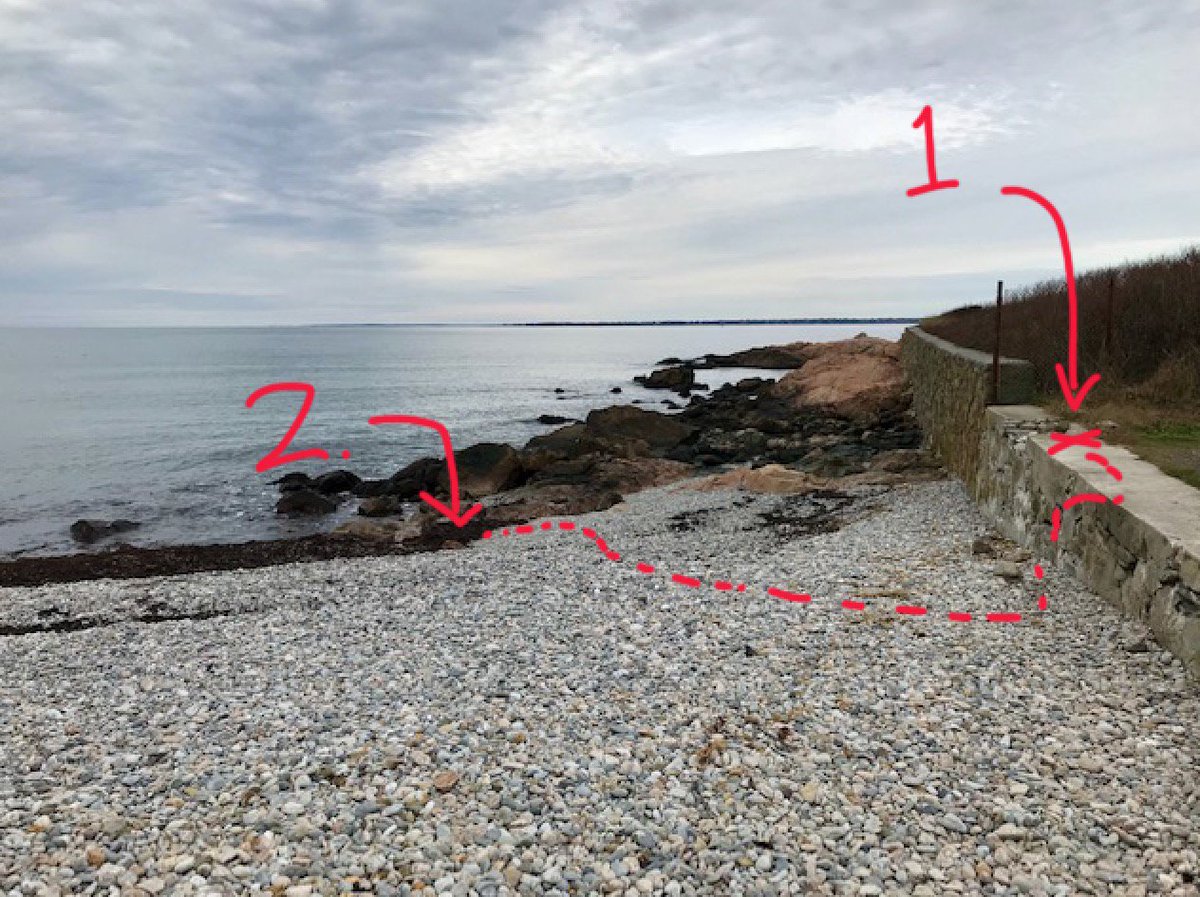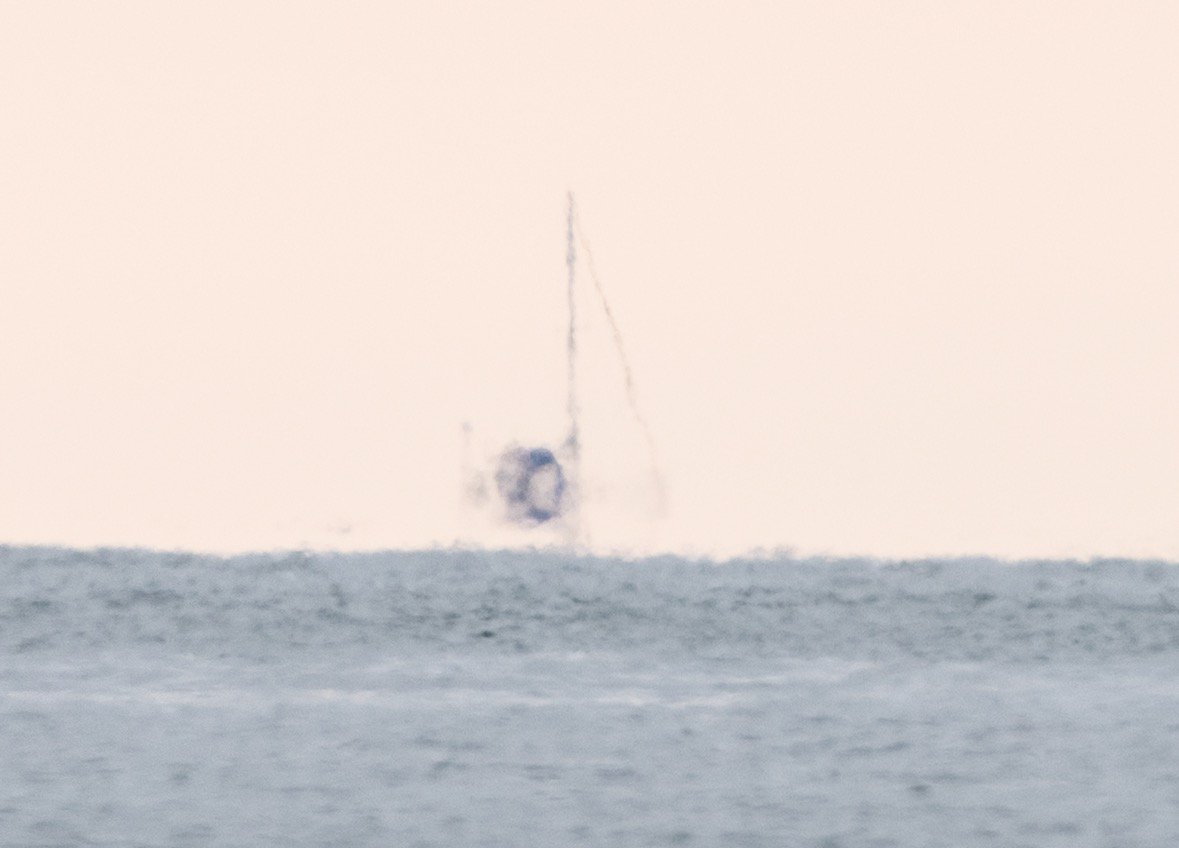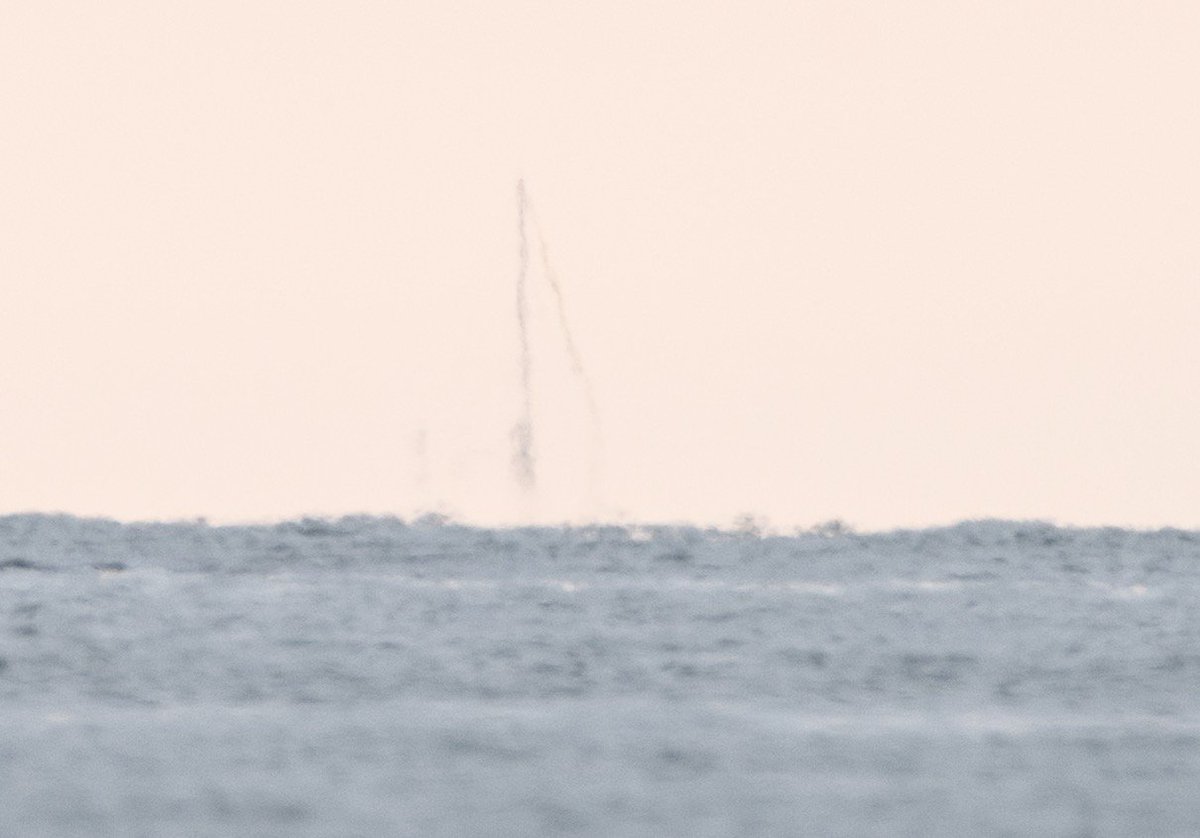OK so here's a little demonstration of how you can directly observe the curvature of the Earth, thanks to the ocean and boats with tall masts. I took this shot today at 12:44 p.m. from Little Compton, RI looking south. It was shot at 600mm with a Nikon D810 from atop a wall.
I then went down from the wall and to the water's edge and took this picture. Same zoom, about 30 seconds later. The boat's hull has clearly disappeared below the visible horizon—it's a combination of refraction of the air above the cold water as well as curvature.
I THEN crouched down and took this picture a second or two after the last one. I'm 5'6", so here I was probably only 2 feet above the water's surface. That minimizes the distance from my eye (and lens) to the horizon BECAUSE OF CURVATURE.
Again, there's some refraction going on which makes the air look ripply. The water was cold, but still warmer than the air. So that will happen and make far away things distort. But it doesn't make an entire boat appear to sink halfway into the ocean....that's due to the curve.
I did not call the Coast Guard, and no alarms were going off or anyone sailing out to rescue that boat's crew. It wasn't sinking. It was slipping over the visible horizon based on my point of view which, based on my height, is about 2.8 miles away.
This photo diagram shows where I was when I took the first picture and where I went to take the second. I'd guess elevation above the water is a difference of about 10-12-ish feet...the beach there is a gravelly hill. South is to the left here.
Also that boat wasn't moving away from me quickly. It's not a speedboat. During the minute or so I was taking those shots it was pretty much in the same spot. My elevation changed so the distance to my visible horizon was reduced because of the gradual curve of a sphereoid Earth.
When I zoom in even further digitally there's a lot of refraction through several miles of air between me and the boat but this is the difference a couple of feet of elevation makes on my end.
But still that's a huge difference in visibility than when I was on the sea wall, which effectively almost doubled my distance outward (easily including the whole boat.)
There are ways to do basic math to figure out exactly how far you can see based on your height to the horizon, and of course refraction by air and the elevation of the landscape will affect that as well (which is why using the ocean works nicely for this). https://aty.sdsu.edu/explain/atmos_refr/horizon.html
But that's how you can see for yourself Earth's curve. It won't be on the horizontal axis, because that's basically a circle around you, but it's moving outward from you. The curve you can see (below ~70,000 feet) is the one moving away from you.
(I didn't go there just to shoot this demonstration; I went to see the harlequin ducks. The curvature observation was just a bonus.) https://flic.kr/p/2d1j5zB

 Read on Twitter
Read on Twitter